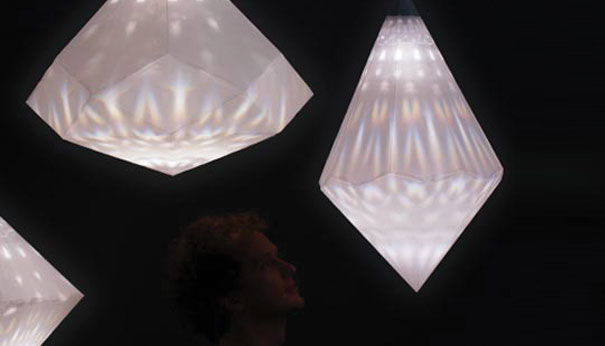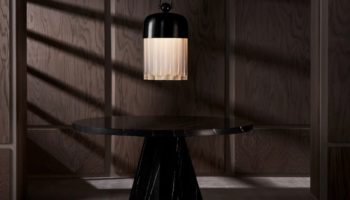Yves Behar’s Amplify Reflects Nicely on Swarovski Crystal Palace
engages the perennial query, “what exactly is a crystal?” The question is relevant for A and D, not only because its simplest connotation (“a rock formed by the solidification of a substance that has regularly repeating internal structure and external plane faces”) evokes one of nature’s most intriguing figurations, but also because the iconic purveyor known as Swarovski has lately made a habit of creating highly-visible architectural installations and set designs with the crystal as a centerpiece.
Crystal Palace. Designed by Yves Behar for Swarovski.
This phenomenon has been manifest at million-dollar venues like the Oscars (David Rockwell, 2009 and 2010); Design Miami (Greg Lynn’s Panels, 2009) and Ross Lovegrove’s Liquid Space, 2008); and Salone del Mobile, where–for eight years running–designers like Arne Quinze, Tokujin Yoshioka, and Ron Arad have displayed their contribution to “a revolutionary project that has aimed to create signature interpretations of light and design using the emotive medium of cut crystal.”
Behar’s Amplify lies squarely within the Crystal Palace tradition of expanding the meaning of “chandelier,” while incorporating millennial exigencies like “affordability” and “sustainability.” Amplify is a series of six pendant lights made of recycled paper fashioned into crystalline forms. The look is thus classical in its simplicity (think of the timeless Japanese and Chinese rice-paper luminaries), yet mysterious and unpredictable–very like a natural crystal. And though Amplify may appear simplistic, a closer look at its inner workings reveals it to be anything but: Behar has incorporated an actual crystal inside to refract the similarly hidden LED into the multiple geometric configurations that illuminate the paper surface. The effect is akin to that fortuitous moment at dusk when natural light finds just the right angle to enter a home and beam straight into some found crystalline surface (my memory is of my mother’s faceted perfume bottle, which would bend and bounce light into an iridescent spectrum on the white-washed walls). Amplify is thus a sort of exponential crystal (or crystal “cubed”), since the actual crystal inside becomes the crystalline patterns on the surface which are in turn mirrored by the crystalline form of the paper. If this sounds confusing, that’s my failing, not Behar’s, for Amplify is simple and engaging, evocatively primitive yet superlatively modern.
Via MocoLoco.





Leave a Reply